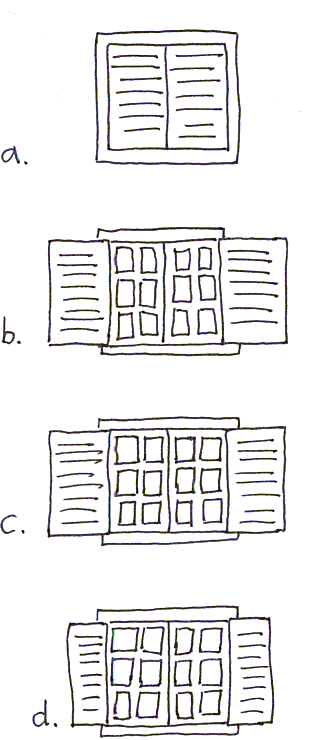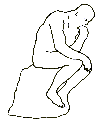
IEP 405: Phenomenology and Environment
AWAYMAVE - The Distance Mode of MA in Values and the Environment at Lancaster University
Week 9. Place and authenticity
| Tutor Details | Biblio | Assessment | Resources | discussion |
Let's start with a quote from a North American college graduate,
just back from a trip to Europe
(taken from Papanek, V. The Green Imperative p. 139 (Thames and
Hudson, 1995))
I didn't like Europe as much as Disney World. At Disney World all the countries are much closer together, and they show you just the best of each country. Europe is more boring. People talk strange languages and things are dirty. Sometimes you don't see anything interesting in Europe for days, but at Disney World something different happens all the time, and people are happy. It's much more fun. It's well designed.
 Preamble
Preamble
There is a group of disciplines where phenomenology has found a home and where you will be able to find applications of the ideas we have been studying; this is the land based disciplines of geography, planning, landscape design and architecture.
I began with the quotation as it seems to point to a contemporary problem. We could say 'where is the problem?' Great if people can enjoy themselves in a simulated environment they will travel less and so not waste resources. My inclination is to say no, 'this is a real problem, such experiences and the mind set that can endorse them are missing something crucial to being human and inhabiting a real world'. That's my cards on the table, but can the applied work in those disciplines help me to mount a well argued case.
A well argued case should begin with a clear analysis of the problem - the quotation is emblematic but we need some kind of systematic examination. However, unravelling cause and effect - cultural and political pressures, perceived wants and 'informed' needs, preferences driven by markets and quasi-biological desires for place and human meaning and so on, is difficult. Let's begin with a simple picture of an impulse that I think is behind much of this work. We have a situation where the world around us - the built environment say - presents us with a designed space which we feel is not designed with us in mind. There seems to be a disjunction between a human living place - one that affords human ways of living, e.g., has a healthy balance of stimulation and peace, solitude and community, challenge and rest and occasions for feeling uplifted - and the kind of places we find ourselves in. There are any number of explanations we could explore to unravel how this has come about, we might all have our favourite targets from corrupt city councils to aesthetically deprived education.
One of the things that phenomenology attempts to do, and as we have seen this is an approach that seems hell bent on overextending itself, is to explain the underlying problem. The explanation simply put is that we have this disjunction between what would afford human living and how a lot of the designed world is because of a conceptual flaw that replaces the lived world with an abstraction and thus we end up with, for example, houses that can never be homes and housing estates that can never be communities. The target here is not the greed of developers or the individual failings of this or that school of architecture, but the whole positivist enterprise of serving not human aspirations but the requirements of a humanity seen through the positivist lens. But note that sometimes this explanation is not just outlining a misconception, but is also extended as an explanation for why developers might be greedy as opposed to visionary or why architectural practice panders to fashionable theories.
Apart from a rehearsal of the critique of science that
says science lacks a recognition of its own groundedness in the lived
world and promulgates a theory driven abstraction as opposed to an openess
to the world, what has phenomenology to offer these disciplines?
That introductory section was a bit abstract itself, so let's turn to
one of the readings for this block and see what Kimberly Dovey has to
say about this.
Read Dovey's 'Putting Geometry in its Place: Towards a phenomenology of the design process'.
 Exercise
Exercise
take time to think about that earlier question - what does phenomenology have to offer the land based disciplines? Do jot down any ideas or make a list if you can think of several.
suggestions to the discussion site please
Discussion
What emerges as pretty central to Dovey's argument is the juxtaposition of the lived world and the geometric world and the problem of imposing the latter on to people via the formal structures of the design process. Thus the help that phenomenology is offering here is a justification for taking the lived world seriously, for incorporating the felt experience into the design process. Perhaps you had other suggestions, my list included:
· prompting us to begin with experience;
· an appreciation of the experience of place as sensual (not just visual);
· recognising movement through space as embodied interaction;
· a way of taking into account the seemingly ephemeral, e.g, atmosphere or the feel of a place;
· an appreciation of the temporal nature of experiencing;
· a means of focusing on the experience of users as opposed to experts;
· valuing the subjective.
But can all of these really be justified with phenomenology?
I think they would all find resonance in a lot of the applied work from
these fields, but is there a problem here? I will just set out a potential
one for you to think about.
A problem with uncritical applications of notions of
subjectivity
To explore this I am drawing on a very thorough critique of phenomenological geography by John Pickles and my own, much less rigorously explored, doubts that arise from my own applied work. Taking that last proposed offering of phenomenology - valuing the subjective - how is this to be understood?
Remembering two fundamental distinctions that we have looked at elsewhere in the module, when we explore the way subjectivity is presented there seems to be a strange conflation between the subjective as in the natural attitude and the subjective as in the transcendental ego (or any form of clarified residue of which we can be certain). So the first fundamental distinction that seems to have fallen by the wayside is the distinction between the natural attitude and the phenomenological attitude.
The second fundamental distinction, remembering what we read from Merleau-Ponty, is that between a subject/object dichotomy and a dissolution of this in realising the embodied self and world as an intertwining. In other words the kind of subjectivity referred to in the applied work often seems to be ordinary subjectivity as opposed to objectivity, e.g., the feelings of the tower block dweller about their new foyer rather than its measurements. But the importance of subjectivity; the reason it was allowed back in, rests on the role of what we might termed a purified subjectivity that has bracketed all its presuppositions in order to be sensitive to the essential relations and to grasp the essence of the phenomenon under investigation and is thus a kind of objectivity subjective or better expressed as the reality that stands beneath any (positivist component of the) natural attitude separation of subjects and objects. If we are not at least attempting to approach that ground then we might as well just say, my subjective response is important because its mine and leave it at that. In the realm of social applications this then becomes everyone's subjective response is important so we should gather them and describe them - this has value and can be used as a critique of an approach that imposes a design by an expert informed by an inappropriate theory, but what happened to the idea of a return to the things?
 Exercise
Exercise
I am presenting this problem as a challenge and it requires some careful thinking through to see whether it is a real problem or not. Hint: one thing that thinking through this will help you to revisit is the distinction and interplay between the natural attitude, the lifeworld and the phenomenological attitude.
We are going to come back to this whole question of subjectivity (whose and what kind next week), but first I just wanted to bring together aspects of embodied practice and authenticity. For this I want to refer to another piece of Kimberly Dovey's work. This is a paper called ‘The Quest for Authenticity and the Replication of Environmental Meaning' in Seamon, D. and Mugerauer, R. eds. Dwelling, Place and Environment (Malabar: Krieger Publishing Company, 2000). 
Early on in the paper Dovey uses a particular modification in design to get at what he calls a “transformation of form and meaning”. He presents us with four examples of shutters.
a) shows some shutters that have been closed as part of the way a house is lived in.
b) shows some shutters that are open and in fact do not tend to ever be closed by the occupants although they could be.
c) shows some shutters that do not close, they are permanently fixed to the wall.
d) shows some shutters or rather the suggestion of shutters as they are both fixed to the wall and would not cover the windows even if they could be closed.
Dovey then asks at what point do the shutters become inauthentic?
 Think
Think
Where would you say the transformation takes place?
Obviously d) is just a kind of shutter motif, I have seen this on some modern houses in England (where shutters are not commonplace) but unfortunately could not find a picture of one.
c) because it can't be closed is obviously, in some sense, no longer a shutter.
However, Dovey maintains that the transformation that makes c inauthentic is already taking place between a) and b). Of b) he says:
Here although the shutters are formally indistinguishable from the original they are no longer shut and are entirely decorative. The shift between figures 1a and 1b is a transformation of the relationship between the dweller and the form, involving a loss of integration between the shutters and the everyday life of the place. (P.34)
I think this is right, there is a sense in which even the shutters at b) are just a token or vestige of some other kind of life because they are not taken up in the daily or even seasonal round of living in the home. Perhaps we are surrounded by these cultural designators of past ways of living that actually have nothing to do with our lives as they are lived. Can you think of some more? Is it a problem?
Let's end with some shutters in use.
 I
I
Web notes by Isis Brook updated March 2005
| Tutor Details | Biblio | Assessment | Resources | discussion |